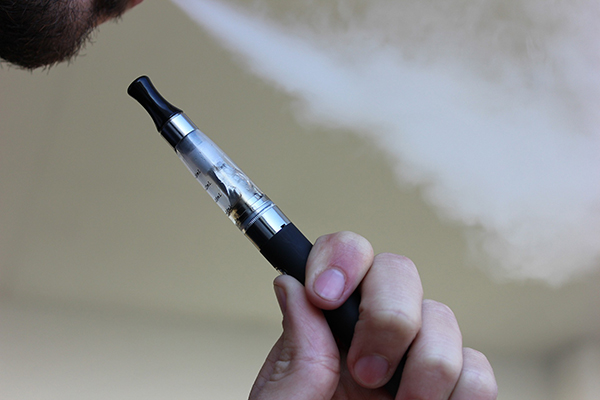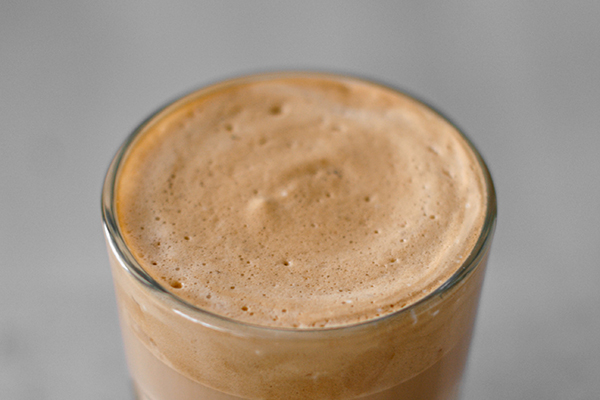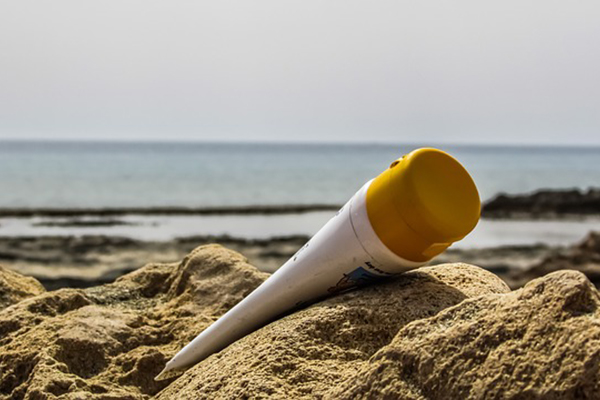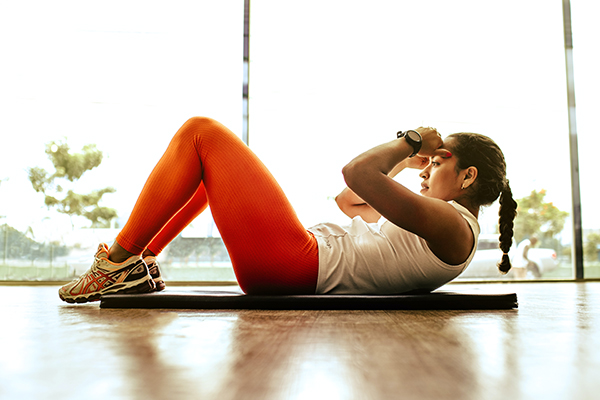E-cigarettes, Vaping and Your Health From a Doctor’s Perspective
 In light of recent reports of nearly 14 people being treated or hospitalized at Harborview Medical Center since October for serious burns caused when e-cigarette batteries exploded – Seattle parents should get a slight sigh of relief thanks to recent federal regulation. Earlier this year, the US Food and Drug Administration (FDA) finalized regulations governing the sale and production of what it calls “electronic nicotine delivery systems” (ENDS), otherwise known as e-cigarettes or “vape” products. Until now, these products had been subject to very little oversight in terms of chemical content. Claims about the safety or potential benefit for smoking cessation went unchecked, and there was no limitation on how or where the products could be marketed – using advertising techniques known to appeal to minors.
In light of recent reports of nearly 14 people being treated or hospitalized at Harborview Medical Center since October for serious burns caused when e-cigarette batteries exploded – Seattle parents should get a slight sigh of relief thanks to recent federal regulation. Earlier this year, the US Food and Drug Administration (FDA) finalized regulations governing the sale and production of what it calls “electronic nicotine delivery systems” (ENDS), otherwise known as e-cigarettes or “vape” products. Until now, these products had been subject to very little oversight in terms of chemical content. Claims about the safety or potential benefit for smoking cessation went unchecked, and there was no limitation on how or where the products could be marketed – using advertising techniques known to appeal to minors.
Since coming to market in 2006, e-cigarettes have gained popularity – particularly among teens and young adults. The Centers for Disease Control and Prevention (CDC) found that use of e-cigarettes in teens between 2013 and 2014 rose nearly three times, from 4.5 to 13.4 percent.
Among the new regulations the FDA instituted on May 5 is one that should protect young people. This law prohibits retailers from selling e-cigarettes, hookah, cigars or any other tobacco products to people under age 18. Access by young people will now be restricted in these ways:
- No sale of ENDS – online or in person – to people younger than 18
- Thorough check of photo ID
- No sales in vending machines (except in adult-only facilities)
- No free samples
The new FDA regulations will also impact manufacturers, importers and retailers of ENDS. Products will need to undergo a thorough review before they can reach the market, these regulations include:
- Registering manufacturing establishments
- Reporting a complete list of ingredients including potentially harmful chemicals
- Including mandatory health warning statements on packages and advertisements for all ENDS products
- No selling of modified-risk tobacco products (including those described as “light” or “low”) unless authorized by the FDA
ENDS come in a variety of forms, making regulations challenging. Some looks like pipes, some like cigarettes and some like small batons. On a most basic level, all of the products consist of a cartridge containing a nicotine liquid, an atomizer with a heating element and a battery. The user pushes a button on the device, which releases some liquid from the cartridge; the liquid is heated and vaporized in the atomizer, and then inhaled. Some products are completely disposable. Others have refillable cartridges and rechargeable batteries.
Because these products do not use combustible materials, like the burning paper and tobacco of a cigarette, it has been proposed that they are less risky and “healthier” than cigarettes. The vapor does not have tar or carbon monoxide, for example, two products of cigarette smoking known to contribute to lung damage. However, when researchers look at the ingredients in the nicotine liquid, they have found chemicals like glycerol and propylene glycol, which can lead to dangerous byproducts. Cancer-causing compounds such as formaldehyde have been found in some used ENDS products after the combustion of the glycerol compounds. The flavorings are potentially problematic as well, even dangerous. A Harvard study found that a compound called diacetyl is found in 75% of flavored nicotine liquids. Diacetyl is known to cause “popcorn lung,” a destructive lung disease.
Studies on the long-term effects of cigarette smoking took many decades to confirm suspicions of their harm. With e-cigarettes, scientists and physicians have not yet had decades for research, and so there is no data about the long-term health effects of regular ENDS use. Additionally, there is no clear evidence that using a vape product or any other ENDS helps people to quit smoking. Some small studies have shown ENDS may help people reduce cravings. However, whether this marks progress to quitting is unknown.
Despite the many unknowns about ENDS, their popularity is still on the rise. Surveys show that the number of participants who report trying an e-cigarette nearly quadrupled between 2010 (1.8 – 3.5 percent) and 2013 ((8.5 and 13 percent). Those using e-cigarettes on a routine basis was lower, but still rose in that timeframe.
What’s alarming about such use is it could lead to or further nicotine dependence, particularly among teenagers and young adults. Connections have been made between teen e-cigarette use and use of conventional tobacco products such as cigarettes. Studies suggest that of teen tobacco users, three out of four will continue using tobacco into adulthood. Add in marketing tactics that appeal to adolescents plus the use of enticing flavorings, of which aren’t addressed in the new FDA regulations, and the statistics are cause for concern.
When it comes to safeguarding our community’s children, there’s nothing quite like the voice of a trusted adult. Parents, guardians, teachers and other adult role models can play a significant and complementary role to the FDA’s ongoing efforts to regulate tobacco products. We all need to educate our children about the potential harms of e-cigarette use. Seattle Children’s and the CDC have additional information for parents and teachers.
Dr. Julia Becke is an internal medicine physician at PacMed.
How (and Why) to Keep Your Kids Away From Screen Time This Summer

More time parked in front of a screen means less time for playing, or reading, or being with people, or learning. It’s not just harmless fun.
Kids aren’t required to hit the books on vacation, but that doesn’t mean they should begin forging a mind meld with an iPad, either.
Once school is out and kids have less to do, many parents find themselves giving in to requests for video game time, another turn on the smartphone, and lots and lots of TV. (All known as screen time.) And with tweens and teens, parents may not have a lot of control at all because kids have their own devices — and parents have less control over how that time is spent.
But what’s the harm? It’s just a little entertainment, right?
“When you use screen time or increase your screen time, you’re generally taking away from other activities,” said Dr. Alexander Hamling, a pediatrician at Pacific Medical Centers. “Outdoor activities. Reading, learning activities, so it really becomes kind of a substitution for how kids can learn and interact with other kids.”
The American Academy of Pediatrics currently recommends no more than an hour or two a day of screen time for kids over 2. (And for children less than 2 years old, the AAP recommends no screen time at all.)
“When you use screen time or increase your screen time, you’re generally taking away from other activities,” said Dr. Alexander Hamling, a pediatrician at Pacific Medical Centers. “Outdoor activities. Reading, learning activities, so it really becomes kind of a substitution for how kids can learn and interact with other kids.”
“It’s much easier to start limiting screen time with a 5-year-old than it is with your 15-year-old,” said Hamling.
One way to start is to create a technology-free zone, such as the dinner table. Keeping tech and televisions out of kids’ bedrooms can also help help reduce the temptation to turn to electronics for entertainment.
Hamling suggests shifting the focus away from media: Parents can help get kids engaged with real-world activities by building a family calendar, especially focusing on outdoor family events, so kids know what will be happening each week. If kids know they have plans to look forward to, they’re less likely to fill in the time with another round of video games, he said.
Heading out to the movies counts as screen time, too — time that could be better spent.
“If you’re going to go to the movies and see a two-hour cartoon, it means that you didn’t spend two hours outside on a nature walk, or two hours picking flowers, or two hours coloring or reading books in the library,” said Hamling.
“If screen time becomes your kid’s priority, that’s more detrimental than the sheer number of hours that they watch.”
Cyber Bullying and the Effects on Kids
Dr. Alexander Hamling from Pacific Medical Centers’ Canyon Park clinic, interviews with Q13 about cyber bullying and its astonishing impact on children. Dr. Hamling practices pediatric medicine and is particularly interested in travel medicine, women’s health, sports medicine, pediatrics, and chronic diseases.
Keeping Student Athletes Healthy

Participating in a school sports programs is a great opportunity to help adolescents develop muscular strength, keep weight under control, boost confidence and inspire camaraderie.
But when participating in sports on any level, eating the right balance of nutrients is essential. For athletes looking to build muscle and strength, understanding caloric intake and proportions of different macronutrients (carbs, fats and protein) is key.
As spring sports season ramps up around Seattle, we want to offer tips to students, coaches and parents on ways to ensure student athletes are getting proper nutrition.
When building a diet for an athlete, it’s important to incorporate plenty of carbohydrates. Many people are afraid of carbs, but for athletic purposes, carbs are critical to performance.
The main source of energy for an athletes’ explosive power comes from carbs. About 60 to 70 percent of the athlete diet should be good carbs, such as whole grains, quinoa, legumes (beans and lentils), fruit, unsweetened yogurt and root vegetables, such as sweet potatoes.
During the first two minutes of high-intensity exercises, all energy generated comes from carbohydrates. As exercise time increases, the calories burned start to transition from carbohydrate stores to the fat stores -– meaning that it’s important for athletes to include healthy fats in their diet.
At most, 30 percent of total caloric intake should come from healthy fats such as nuts, salmon, avocado, omega-3 eggs and grass-fed meats — all of which also help with inflammation and are good for joint health.
Myth Busters
With easy access to information, nutrition myths continue to confuse even the most experienced athletes. Here are a few of the more common exercise nutrition myths, why they’re wrong and how they can hurt performance.
• Being skinny is healthy and leads to better sports performance — To excel in their sport, it is important that all athletes eat enough. If an athlete is looking to lose weight, he/she shouldn’t be losing more than 1 to 2 pounds a week.
It’s also important to note that women’s bodies normally have a higher fat-content percentage than men. If a women’s body-fat percentage gets too low, their menstrual cycles can become irregular or stop, which decreases their hormone production of estrogen. This, in turn, can decrease their bone density and increase their risk for development of stress fractures.
In the past, women were told that if they were training hard, it was normal to miss their menstrual period, which is not true.
Also, the social pressures for women to look a certain way can lead to eating disorders or dieting. These issues can lead to “athletic female triad.” This comprises not eating enough calories, which causes the cessation of menstrual periods, which can lead to developing decreased bone density/osteoporosis.
• Sports drinks keep athletes hydrated better than water — Generally sports drinks should only be considered for high-endurance and intensity sports in which the participant is sweating heavily and exerting themselves for greater than 90 minutes. Otherwise, water is enough to hydrate.
Drink to thirst is a good rule of thumb, and if properly hydrated, urine should be very light yellow to clear in color.
• Athletes should eat a protein-heavy diet — One misconception many athletes have is the need to increase protein, decrease fats and switch to a “low-carb” diet. Protein deficiency is not an issue under the standard western diet, and protein is not the main energy source for the body like carbohydrates.
There is a distinction between protein needs for certain athletes: endurance versus strength. For endurance athletes, the protein recommendation is 1.2 to 1.4 grams per kilogram of body weight, but for strength and power athletes, the recommendation is 1.2 to 1.7 grams per kilogram of body weight. For reference, 22 grams of protein is 3 ounces of meat, fish or poultry; an 8-ounce glass of milk contains about 8 grams of protein.
• Carbo-loading provides athletes with more energy — Limiting carbo-loading the night before an event should be a thing of the past. What makes the most impact is to increase carbohydrate intake up to a week before the event.
Carbs that come naturally with fiber, such as oats and winter squash, help control blood sugar for long-term energy.
• Quick energy fix: sugar and caffeine — Many athletes mistakenly consume sugary foods or caffeinated beverages before an athletic event in an effort to get a jolt of energy. But sugar causes a rapid rise in blood sugar, which can cause a subsequent energy crash. Caffeine can do the same, as well as upsetting the stomach.
If snacking immediately before an event, choose a snack with complex carbs and natural sugars, like whole-grain crackers or fruit.
The Right Foods
As students get more involved and dedicated to their sport, they become increasingly health-conscious. But what’s important is ensuring that they’re filling up on the right foods and portions.
Young athletes, in general, need more calories than adult athletes because of their faster growth and metabolic rates. Without proper fuel and nourishment the body cannot attain its full athletic potential and is more susceptible to fatigue and injury.
Eating regular, well-balanced meals each day helps the body get nutrition, balances blood sugar levels and provides the foundation for a strong, healthy body.
Preventing injuries during military training
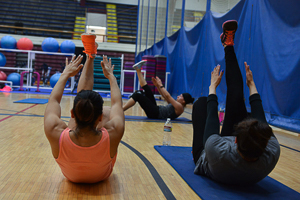
PacMed doctor explains common injuries and preventive measures for military training.
Tired of getting hurt during military training? One local sports medicine doc has some tips.
Dr. Stephen Gingrich, a sports medicine physician graduated from medical school back in 2010, and has been with PacMed since August of 2015. With a background in personal training, he has witnessed and treated many sports-related injuries, enabling him to identify the most common ailments associated with military training regimens and routines.
Do you have any personal affiliation with the U.S. military?
I do not, although I do currently see a lot of patients who either are or have been in the military.
What would you say are the most common military training injuries?
For the military, the most common injuries are over-use injuries – particularly in the lower limbs. Medial Tibial Stress Syndrome and shin-splints are two of the most frequent injuries I see. These are fairly severe issues because they can mean that any weight-bearing can become very painful. Stress fractures are also somewhat common, and although most people do not get to that point, it certainly does happen. People can also develop what’s called Stress Reaction, which is usually something that people who are training come in for seeking medical advice.
When are these injuries most likely to occur?
One of the times in which many military recruits encounter these injuries is during basic combat training. You see a lot of these injuries develop once a person starts to run or do a lot of weight training without a gradual build-up.
How do unsafe practices make these injuries occur?
Unlike many athletes who start their training earlier in life, many people who join the military don’t have that background, so they’re essentially starting from scratch. When this happens, a lot of over-use injuries are likely to happen. There are definitely things specific to the military with higher risk for these kinds of injuries; parachuting, for example, can cause lower-limb impact injuries.
How can these injuries be prevented – what steps or practices can be utilized to ensure safety for everyone?
The main preventative measure would be to prepare before the conditioning program so that the soldier is not starting without any proper exercise training. U.S. militaries have started implementing programs that have a screening process for recruits that may be at higher risk for developing these injuries and putting them into a program where they slowly build stamina to a certain point and then begin the rest of the training process. The other thing to note is whether or not a recruit or active-duty member has a preexisting injury, because there is a very high risk that the injury will recur if it has not been rehabilitated correctly.
Good news for military members and their families: these injuries can be prevented with the proper preparation and safeguards. If you have further questions, consult your primary care doctor or consult one of the sports medicine specialists on our team at PacMed.
Spring Break safety

During Spring Break, Seattleites will take to the skies and the highways with the hopes of escaping the daily work or school routine with a spring break getaway. Whether your idea of spring break is a relaxing holiday on the beach, a road trip with the family, or a week with your closest friends, spring break poses its own set of health concerns. Spring break stressors – which can include heatstroke, safety concerns and more – can all be minimized by planning ahead and taking a few simple precautions. Here are some tips to make this year’s spring vacation fun, safe and healthy for yourself, your friends and your family.
Pack a medical kit. Rather than trying to find a pharmacy, especially if battling a language barrier, make a point to pack a small medical kit for urgent needs. Tylenol for pain and fever; antihistamines such as Benadryl for allergies; Neosporin for cuts and plenty of BandAids are good to have on hand. If traveling out of the county, it would be wise to carry antibiotics in case of “traveler’s tummy.”
Ensure you are up-to-date with vaccines. Influenza vaccine is recommended as this can be found in some countries even during summer months. Tetanus vaccine should be updated every 10 years for any cuts or wounds that get dirty. For travel outside of the U.S. certain vaccines like Hepatitis A and Typhoid vaccines may be recommended. Consulting the Center for Disease Control website (www.cdc.gov/travel) is a good starting point.
Hydrate Often. One of the more common ailments when traveling is dehydration especially with destinations that have hotter climates. Strive to drink water frequently throughout the day to prevent illness.
Be careful of what you eat and drink. Depending on your location, food can be prepared quite differently and cleanliness of water can be questionable. For food, know what you’re eating and how it’s prepared to prevent food borne illness. Additionally, ensure that you have medication with you for an upset stomach. For water, if you’re unsure if it’s safe to drink, buy bottled water and avoid ice cubes that might be frozen from a contaminated water source. Also, fruits and vegetables may have been washed in contaminated water resulting in gastrointestinal illness. As a tip, boiling water at a rolling boil for at least 5 minutes can kill most pathogens.
Protect yourself against the sun. Make sure to bring plenty of sunscreen that is at least 30 SPF for the whole family. The sun’s UV rays are the strongest between 10a.m. and 4p.m., and can bounce back from sand, snow or concrete. Cover all of the exposed skin often with copious amounts of sunscreen. Use before and after watersports and exercise, just remember it takes 30 minutes to be effective. Sunscreen is generally not recommended for infants under 6 months of age – use long sleeves and hat to keep a baby’s skin protected from the sun.
Get traveler’s insurance. If leaving the country, it is advisable to have traveler’s insurance. Emergency evacuations and international medical care are likely not covered by your health insurance carrier.
Stay alert! The biggest reason for injuries and deaths in the U.S. and abroad when traveling is car accidents. Make sure to take frequent breaks and rest stops on long car rides. Traffic patterns in foreign countries may be more chaotic. As a pedestrian, use extra caution in these situations. Additionally, while there’s nothing wrong with indulging a little on vacation, be careful about how much, and where you drink alcohol as it can make you vulnerable to unsolicited danger.
Most importantly – have fun! Spring break should be a time to relax and unwind from the day-to-day stress of school, home life and work. But in many cases, it’s not always that simple. Make sure to follow these tips to ensure that your vacation is memorable for all the right reasons.
Recipe: Peanut Butter Protein Smoothie
For a simple, protein-packed meal, try this peanut butter smoothie!
Healthy Habits for Summer
 It’s early June, but it already feels like summer is HERE. With the warmer weather, and flowers in bloom, try to think of this as a time for you to create healthy changes!
It’s early June, but it already feels like summer is HERE. With the warmer weather, and flowers in bloom, try to think of this as a time for you to create healthy changes!
So we’ve put together a few ideas to get ready for summer sun, the beach and feeling great.
Drink water.
If you ever feel slightly tired or sluggish, it’s always a good idea to consider how much water you’ve drank lately. Even if you make great choices in every other aspect of your health, if you neglect water intake, your body may not feel tip top.
The old one-size-fits-all rule was to drink eight 8-ounce glasses of water a day. However, the new thinking is that you should drink half your body weight in ounces per day to stay adequately hydrated. (So if you weigh 150 pounds, you would drink 75 ounces of water each day—or about nine glasses.) Doing some rigorous exercise? Increase your water intake. A reusable water bottle by your side can be a great reminder to sip water.
Get some exercise.
Exercise alone doesn’t promote weight loss, but it’s a key component to a fit body. Setting goals and doing physical activities you enjoy is a good start. The Centers for Disease Control and Prevention recommends adults get at least 2 hours and 30 minutes of moderate-intensity aerobic activity every week, plus muscle-strengthening activities on at least two days.
That might sound like a lot, but when broken out over seven days, you could exercise just 30 minutes on five days. If you are pressed for time, it’s also OK to split up your daily exercise goal into 10-minute chunks. Easy muscle-strengthening ideas include push-ups, squats and sit-ups. Still no time? Doing 15 of each a day is better than nothing and only takes about 5 minutes.
Even if you fall short, aim to have no days with zero activity. Even a short walk is better than a completely sedentary day.
Eat your way to a healthy body.
Being unprepared makes it all too easy to eat foods close at hand rather than healthy foods. A little planning, shopping and chopping will help you lose or maintain a healthy weight and move you toward a healthier diet. Chop vegetables in advance and store in the refrigerator or freezer. Plan and bring healthy snacks for work that keep you well away from the vending machine.
Use the MyPlate method to design meals. The four quarters of your plate should be divided between fruits, vegetables, protein and grains.
Easy “wins” for your eating plan might be choosing a black-bean burger over regular beef or skipping the cheese on a salad or sandwich. If you enjoy salads, be mindful of the dressing. Heavy, creamy options like ranch or blue cheese can be swapped for a balsamic or Italian vinaigrette. On their own these changes seem small, but weekly they add up to big potential weight loss.
Another tip—Try to avoid extra calories from sugary beverages, such as sodas and juices. Read the labels—sometimes even beverages that are labeled as healthy can contain a lot of sugar! Rather, make your own smoothies, containing healthy vegetables, fruits (maybe frozen) and plain yogurt.
Sleep well.
A lack of sleep increases the levels of a hunger hormone called ghrelin and decreases levels of the satiety/fullness hormone called leptin. So not enough sleep could lead to overeating and weight gain. When you get 7-9 hours of quality sleep, your body feels more balanced and that will help you to snack less, make better food choices and have fewer cravings. What else does a lack of sleep do? It makes you crave more carbs!
Four sleep culprits:
- Smartphone use. Lying in bed with the blue light from your smartphone screen stimulates the brain and may slow the release of the sleep-inducing hormone called melatonin. The result? It’s difficult to fall asleep! Even though many phones now have a “night mode” feature to filter out blue light, the act of engaging with your phone right before bed may still be disruptive to your sleep.
- Stimulants like coffee, alcohol and food— alcohol especially, because it can make you snore and wakes you.
- An environment that’s either too hot or too cold.
- And lastly, a no-brainer—stress.
Be mindful, reduce stress.
Try adding meditation practice into your daily routine. It’s easy to get lost each day rushing from one thing to another, particularly when kids are home from school, and vacation-planning can add to already existing stress levels. Try to take 5 minutes each day to practice gratitude. Research done on this topic has shown that reminding ourselves to be grateful, for not only what is good, but also some of our struggles that help us grow, reduces the stress response in our bodies, and regulates our sleep and mood.
Listen to your body!
Overall, the best way to improve your health and feel good about yourself before summer is to take some time to listen to your body. Treat it well and you’ll be on the path to feeling great in time for summer!
5 Things to Consider When Choosing Sunscreen
 Summer is right around the corner, now is a good time take stock of your sun protection from last summer.
Summer is right around the corner, now is a good time take stock of your sun protection from last summer.
Keep these tips in mind to help choose and use an effective sunscreen:
1) Look for the words “broad spectrum” on the label.
The two types of UV light in sunshine than can damage your skin are called UVA and UVB rays. Sunscreen labeled as “broad spectrum” protects against both types of rays. Only sunscreens that protect against both are allowed to advertise the words “broad spectrum” on the label.
2) If you have sensitive skin, study the ingredients.
Some sunscreens include fragrances or alcohols that can be irritating for sensitive skin. It may also help to look for sunscreen that only uses physical blockers such as titanium dioxide or zinc oxide instead of sunscreen that uses chemical blockers such as oxybenzone, octocrylene, octinoxate, etc. The physical blockers have less risk of irritating the skin.
3) Your makeup might already have an SPF.
For women, tinted moisturizers, foundations and powders commonly include a Sun Protection Factor (SPF). Double-check the label of your daily makeup to see if you are using makeup that includes an SPF of 15 or higher. Unless you typically use a thick layer of make-up, you would still need to use a sunscreen as well. Don’t just rely on your make-up. For the face, look for face moisturizers with sunscreen already in them. These sunscreens usually do not have the typical sunscreen smell and may feel nicer on your skin. Don’t forget to also put sunscreen on your neck and upper chest. Put this on in the morning after you wash your face every day to protect your skin.
Please re-apply sunscreen every 3-4 hours if you are going to be continuously outdoors, get wet or are perspiring.
4) Check for an SPF between 30 and 50 for every day use
Look for an SPF of 30 or higher. SPF 15 filters out 93 percent of rays, SPF 30 keeps out 97 percent and SPF 50 blocks 98 percent. No sunscreen can block 100 percent. For daily use, a sunscreen of at least SPF 30 is recommended. If you will be outdoors for a long time (swimming, hiking, etc) please wear a higher SPF.
5) Decide between cream and spray—or use both!
They each are handy in different situations. You may prefer a cream for yourself, but when applying to children, a spray may be easier. Sprays are also convenient for protecting areas that are hard to apply a cream sunscreen to such as the scalp, back or top of the foot. If you do use a spray, be careful around open flames as some sprays include alcohol and may be flammable.
Whatever sunscreen you choose, the best way to protect your skin from sun damage is to be mindful of exposure. Limit time in the sun, apply sunscreen before you go out and reapply every two hours. You can also consider sun protective clothing or wide-brimmed hats.
Besides sun protection, another excellent health strategy is to schedule a dermatology skin screening. They’re fast, easy and can detect skin irregularities early.
Enjoy the sun this summer (but not too much)!
Don’t have time to workout? Try HIIT Workouts.
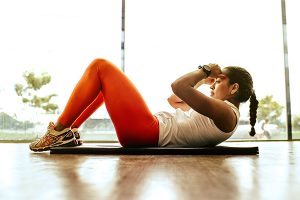 Finding enough time to workout is a challenge for many men. Getting up early or squeezing exercise in after work is a difficult habit to build. Finding a workout that fits your schedule and you enjoy and that delivers maximum benefits? That’s the goal for many people.
Finding enough time to workout is a challenge for many men. Getting up early or squeezing exercise in after work is a difficult habit to build. Finding a workout that fits your schedule and you enjoy and that delivers maximum benefits? That’s the goal for many people.
One of the top trends in the fitness world today is high-intensity interval training, or HIIT. These workout programs feature short intervals of high intensity followed by longer rest periods. This approach gives maximum physical benefits in a short amount of time.
If you’re pressed for time and seeking a quick workout that still generates benefits and gets you sweating, HIIT can be a great option.
What is HIIT?
High-intensity interval training is a method of exercise that alternates quick, high-intensity intervals with longer, slower intervals for recovery. The goal is to perform short bursts of all-out work (typically about 30 seconds) that pushes your body near its limit. This is followed by periods of less intense activity to recover, typically about 1 minute. Together, these intervals have been shown to make the body work harder than performing a cardio exercise at a constant level for an equal amount of time.
Why do a HIIT workout?
- A HIIT workout increases overall physical fitness. Pushing yourself during the intense part of the interval increases endurance and stamina. You may notice a difference during other workouts and daily life.
- Even after a HIIT training, your body continues to burn calories. A HIIT training’s intensity means your body has to work harder to get back into balance after exerting itself. So even when you’re resting after your workout, your body continues to burn calories.
- The workout is short—a great benefit if your schedule is packed. A quick HIIT workout of 10 minutes has many benefits. If you have more time, shoot for a 15-20 HIIT session.
How do I start?
Ease into HIIT. If you’re not accustomed to high-intensity exercise, a HIIT workout can be a shock to your body.
A HIIT-style workout can include almost any aerobic exercise—running, cycling, Pilates. Any aerobic activity you enjoy can be turned into a HIIT training session. In general, perform your chosen activity all-out for about 30 seconds and then recover for 1 minute. (For example, sprint for 30 seconds and then walk for 1 minute.) This can be repeated for 15-20 minutes, depending on your fitness level. And don’t forget to warm up for at least 5 minutes before a HIIT session.
HIIT workouts are intense, so it should be just one type of workout you do. Incorporate it maybe once or twice a week to start and allow recovery between sessions.



